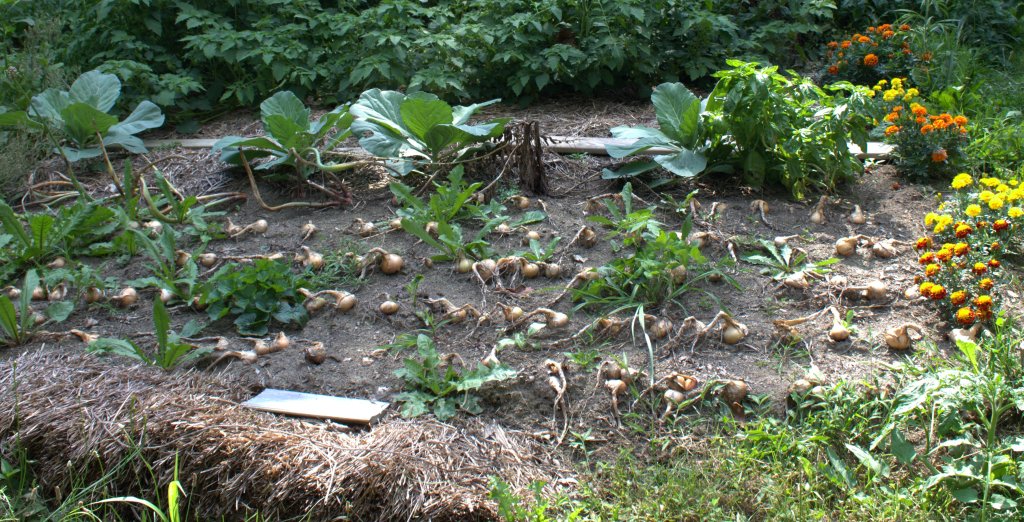Harvesting onions is easy work. Watch them grow and water them until the tops fall over. When the green tops have faded to brown and the onions appear to be drying out to a tan color, it’s time to harvest.
This year the onion harvest is early for us. Usually we’ll be harvesting them in September or even October, not August.
We have to harvest when they’re ready however, or else they could rot in the garden. The torrential rains we’ve had must have toppled over their greens early. Now that the green tails have all but dried up and withered down to a small portion, we’re removing the onions from the garden.

Once the onions are lifted from the ground, and it’s really that easy, they’ll be set on newspaper to dry.
Roots can be snipped off with your fingers and the outer dirty wrapping removed also. Don’t clean the onion bulbs too good at this point. The outer wrappers will protect the juicy onions from drying out during storage.
Wait for a week or two and test whether the top near the onion itself feels moist. If the top feels like it isn’t totally dry, wait.
Wait to cut off the brown tops until they’re completely dry.
